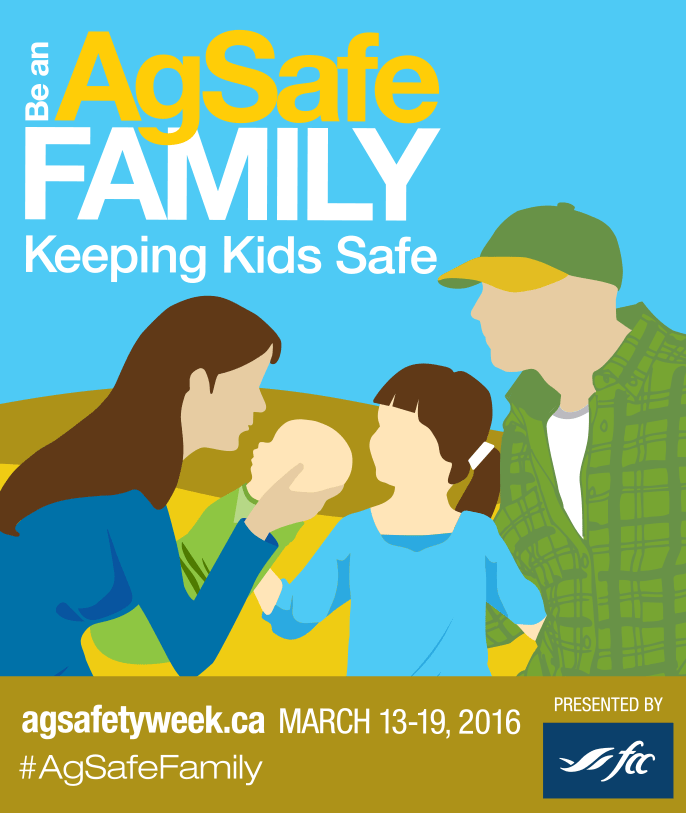Safety straight talk
REFOCUSING THE CONVERSATION
HOW DO YOU approach safety on your farm? Each year, the Canadian Agricultural Safety Association (CASA) hosts the Canadian Agriculture Safety Week focusing on a particular aspect of reducing farm-related injuries and death. This year, CASA wants to challenge attitudes towards farm safety.

Glen Blahey, with CASA, says that the need to change the conversation around farm safety is an emerging theme in farm safety discussions. Yes, agriculture is a unique industry and yes, injuries do happen, but that does not mean they should happen. “We need to create a Canada where no one is injured farming,” he says.
The majority of accidents in agriculture are behavioural based. There needs to be a culture shift towards putting safety first on the farm, with more education and more awareness, according to CASA. When this change occurs — through strong leadership, cultural change, and a move to safety planning — the industry will see fewer people injured.
THE FARM BRAND
Recently, the public spotlight has been on agriculture with farming related injuries and deaths in the news. It is important for the public to realize the agriculture community is already taking steps to keep farming a safe industry.
“It is time to raise awareness to the general public that the agri-community takes [safety] seriously,” says Ron Bonnett of the Canadian Federation of Agriculture. “There is a public trust to uphold.”
This is especially important with recent accidents on the farm involving children — the public is critical. As a small per cent of the general population understands agriculture, raising awareness about safety becomes even more important.
BEYOND LOSS
Beyond culture and the public, accidents are also an economic burden to the farm. Farm safety is a strategic move to maximize profits on the farm, says Blahey.
A Queen’s University study found that serious injury with a hospital stay for the principle decision maker of a farm operation could cost $10,000 in productivity losses. The same study found that a fatal injury to the farm’s principle decision maker could cost a farm up to $275,000, with the very real possibility of having to sell the farm as a result.
What these numbers tell us is that beyond the emotional strain, a farm accident also has a substantial impact on the profit margin of the farm. How long would it take you to recover from one of the above losses? The economic burden of an accident is a tangible result of not having a safety plan in place.
PLANNING FOR SAFETY
Furthering the discussion of the impact of a farm accident, taking farm safety seriously and developing a Health and Safety plan is the next step. The Health and Safety plan will ensure that everyone working on your farm knows how to work in a safe manner. It also protects the owners of an operation if an accident does occur.
“A Health and Safety plan is a document demonstration of due diligence with respect to occupational safety,” says Blahey. “From a legal perspective, you are much better off.”
From a business risk management viewpoint, it is therefore, an essential tool to a successful operation. A Health and Safety plan can be integrated with other farm management tools to show employees that the business cares about their safety. And when they see this commitment by the organization they are more likely to show their own commitment to safety at work.
The biggest investment will be one of time to take a few minutes before starting work to discuss safety. With paperwork in order and regular meetings, the organization is covered should anything happen on the farm — due diligence is important.
For more information, visit www.agsafety week.ca.
GET GOING ON FARM SAFETY
The “Be an AgSafe Family” campaign (www.agsafetyweek.ca) kicked off this March to coincide with Canadian Agriculture Safety Week. The aim is to empower families with the information they need to make safe choices on the farm.
The focus of this year’s Agriculture Safety Week was how to keep children safe on the farm. Playing on the farm is much different than playing in the city, so it’s important to help mitigate risks. This is a way to influence the newest generations to think about safety, so they can challenge the older generations to make changes too. This will change the culture with the next generation of farmers. The campaign will run over three years with next year’s focus being adults and the following year’s being seniors on the farm.
There are many benefits to it and an investment in time is just the first step. Take a few minutes to consider safety on your farm, and make changes now. If you do this, you will help change the culture around farm safety, today. •






















